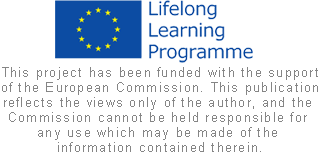| Spis treści | |
1 Why e-portfolio Transcripts of records from school or university tells only a little about the achievements and does not correspond to the expectations towards modern learner. Skills and competences are far more important in professional life than a formal grade. But they are also far more difficult to verify, demonstrate and present. Mobility of employees and students does not make it easier to create a coherent system of competence accreditation. How to convince an employer that our skills are significant without any formal confirmation as they could have been achieved during hoiliday placements, scholarships or apprenticeship?The multidimesion of e-portfolio is a source of its strength. There are plenty of definitions describing e-portfolio and its cognitive, pedagogical and technologica features. Let's consider some of the most important areas: In the narrow sense e-portfolio is defined as a collection of digital contant - texts, photos, video or audio file that are organised in a logical way according to the aim. It repersents achievements of the indivuduals and/or groups, institutions and is ususlly supported by a dedicated system. (compare: Love i in. 2004; Cambridge, 2001; Challis, 2005; Simens, 2004). However such a narrow definition is only a starting point for further developments. In all the best practices analysed it is only a first step of e-portfolio implementation. In a longer perspective e-portfolio supports not only recording but mainly reflection and development of its author. Mature e-portfolio enables the author to create and manage of the digital repository of content that represents his/her skills and competences in a defined context and supports reflection on learning and development. A learner, a student, an employee tells his/ her story with e-portfolio filled with digital artifacts: evidence, ideas, reflections, feedback, data. |






